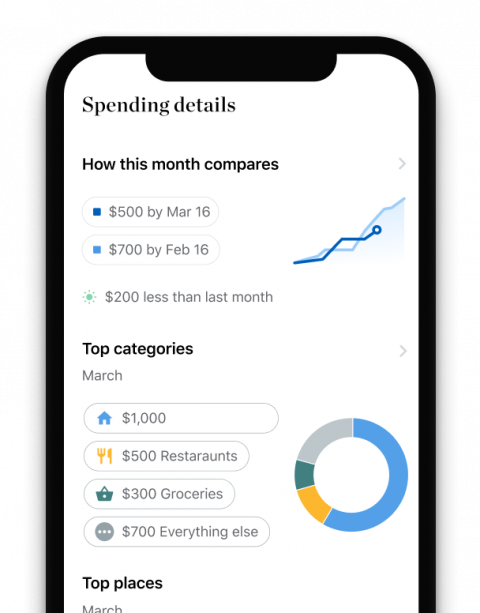How To Get A Government Grant
Whoever said "nothing in life comes free" didn't take into account government programs that help people pay for things like college, day care and a new home. And during the coronavirus outbreak, there is even more assistance available to you.
Free money from the government: COVID relief and more
The high-priority free money from the government these days is COVID relief . Use NerdWallet's stimulus check calculator to determine how much COVID relief money you could expect and find a link to track the status of your payment from the U.S. Treasury.
Above and beyond pandemic payouts, there are other day-to-day government programs available to those in need. But unlike COVID assistance, you'll have to seek out and apply for these financial boosts.
Most of these programs are funded by taxes, so technically you pay something, but it's as close as you'll get to finding free money from the government. Note that the COVID-19 pandemic may affect the availability of some of these programs.
1. Get help with utility bills
Need help paying your heating or phone bill? These programs may be able to help:
-
The Low Income Home Energy Assistance Program helps low-income households cover heating and cooling costs. Grants are issued via states, which receive funding from the Department of Health and Human Services. Each state sets its own eligibility requirements, including income levels.
-
The Lifeline program offers discounted phone or internet service. You must meet certain eligibility requirements.
Money wins start with game plans
Find ways to save money with your cash, cards, and bank accounts all in one place.

2. Find money for child care
Day care is a major expense for many families. Annual costs for infant care range from just shy of $5,000 in Mississippi to more than $22,600 in Washington, D.C., according to the Economic Policy Institute, a nonprofit organization focused on low- and middle-income workers.
The Child Care and Development Fund can help ease the burden for low-income families. Administered by the U.S. Department of Health and Human Services, the fund gives states, territories and tribes money to distribute to families to help pay for child care. Grants are income-based and typically cover care for children under 13. Find the Child Care and Development Fund contact for your state.
3. Recover unclaimed money
This isn't so much free money as it is money owed to you. It could be a long-forgotten deposit paid to a utility company, a lost savings bond, unclaimed life insurance benefits or an uncashed paycheck.
These unclaimed funds are turned over to the state when the owner can't be located, often due to a clerical error or companies having an old address on file. Visit unclaimed.org , a site affiliated with the National Association of State Treasurers, to find out if you have money waiting to be claimed.
During the 2019 fiscal year, more than $3 billion in previously unclaimed property was returned to owners, with an average claim payment of $1,780.
4. Get down payment assistance
You want to buy a home but can't afford a down payment. Enter state-based down payment assistance . These grants and loans help you cover the upfront costs of purchasing a home.
In Nevada, for example, prospective homeowners who qualify can pay a fee and receive a grant of up to 5% of their home loan value to put toward a down payment and closing costs. Help isn't reserved for low-income borrowers. For government loans, Nevada's grant program is available to those with an annual income below $98,500. See if you qualify.
5. Find tax credits for health insurance
The future of the Affordable Care Act is murky at best. But for now, the premium tax credits issued via the program are alive and well. Here's how they work:
Individuals and families who buy coverage through the government's health insurance marketplace ( HealthCare.gov ) may qualify for a credit toward their insurance premiums. The credit can be paid directly to your insurance provider, lowering your monthly payments.
6. Apply for college grants
College grants, like the federal Pell Grant , can make it easier to pay for college. Students who are eligible for the Pell Grant could get up to $6,345 for the 2020-21 award year. The exact amount awarded is based on factors that include financial need, the cost of attendance and enrollment status. Students can apply for the Pell Grant by completing the Free Application for Federal Student Aid, or FAFSA. The application is also used to qualify for many state and institutional grants and scholarships .
Other federal grants for college include:
-
The Federal Supplemental Educational Opportunity Grant.
-
The Teacher Education Assistance for College and Higher Education Grant.
-
The Iraq and Afghanistan Service Grant.
Watch out for scams
While there are ways to get free money from the government, there are also grant scams that claim to give you free money from the government in hopes of stealing from you. Don't be fooled. The government rarely reaches out to people with offers of free money, and when it does, it's never via social media.
How To Get A Government Grant
Source: https://www.nerdwallet.com/article/finance/6-ways-to-get-free-money-from-the-government
Posted by: simmonsvenswithe.blogspot.com

0 Response to "How To Get A Government Grant"
Post a Comment